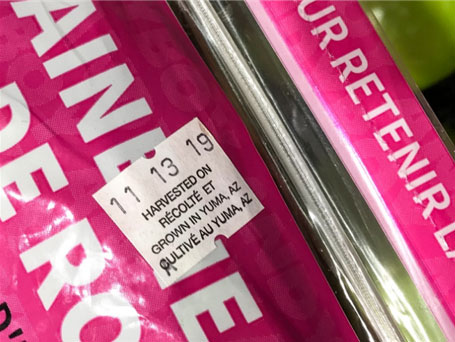
What You Need to Know About the Romaine Lettuce Outbreak
In recent days, you have likely seen media coverage about an outbreak of E. coli associated with romaine lettuce. Fortunately, lettuce farmers, grocery stores and restaurants have acted quickly to remove romaine lettuce grown in the Salinas, CA region that may be involved in this outbreak.
As you’re out shopping or eating at restaurants during this holiday season, keep in mind some important facts so you can continue to enjoy lettuce and leafy greens.
As a registered dietitian, I’m concerned that the overwhelming media coverage of these outbreaks may have a negative impact on people’s health because it can scare them away from eating lettuce. Leafy greens are nutrient-rich. They supply fiber, vitamins A and K, and folic acid, plus the minerals, potassium, iron, calcium yet they’re low in fat and calories. They’re an easy and tasty way for folks to get more vegetables in their meals–a food group most Americans are not eating enough of.
Recently, I was asked to work with a group of lettuce farmers in California who are focused on making improvements in farming practices to prevent these kinds of outbreaks. Please know that the people who grow lettuce and leafy greens are more frustrated than anyone that romaine is once again the cause of illnesses. Working with government investigators, they are examining all the possible reasons romaine may have caused this outbreak so future illnesses can be prevented.
For now, here are few key things people need to know:
- Public health officials are advising people not eat romaine from Salinas, CA because it may be involved in an outbreak of E. coli. Grocery stores and restaurants have removed romaine grown in the Salinas region from store shelves and menus. Harvest and shipping of romaine grown in Salinas has stopped.
- Lettuce producers put a sticker on each package of romaine with the name of the growing region and date so people can identify romaine that is part of the consumer advisory. Fortunately, romaine is now being harvested in several regions other than Salinas. Romaine from these areas is okay to eat. Below is a sample of what these stickers look like on a package of romaine.

- It’s also safe to eat other kinds of lettuce from any growing area – including Salinas. It’s only romaine lettuce from Salinas that’s involved in this outbreak. There are lots of great options including: red leaf, green leaf, spinach, iceberg and many more!
More detailed Q&A on this situation can be found here:
- How can I tell if the romaine lettuce I buy is from Salinas?
- Why are there so many romaine outbreaks?
- Should I avoid eating romaine or other lettuces?
- What precautions should I take with leafy greens?
The bottom line is — even though our food supply is the safest in the world, occasionally an outbreak of food-borne illness does occur. Farmers are doing everything they can to protect consumers and they’re working very hard to improve their safety record. In fact, I recently learned that California and Arizona famers harvest an average of 130 million servings of lettuce and leafy greens every day. Fortunately, outbreaks are by far the exception and not the rule.
Learn more about the romaine lettuce outbreak from Neva Cochran, MS, RDN, LD, FAND
We’re concerned that the extensive dialogue around this topic may have a negative impact on consumers eating leafy greens, which are an easy and tasty way to get more vegetables into their diet.
Look for a sticker on your package of romaine, which will show which growing region that romaine is from. Right now, you should avoid romaine from Salinas, CA.
Lettuce producers are working with supermarkets and restaurants on safety precautions and helping consumers find additional lettuce options.
Lettuce farmers are disappointed by these outbreaks and doing everything they can to prevent them.


